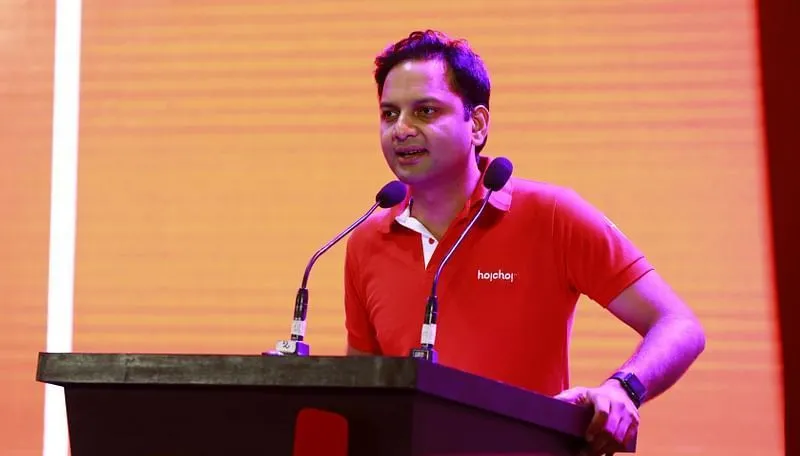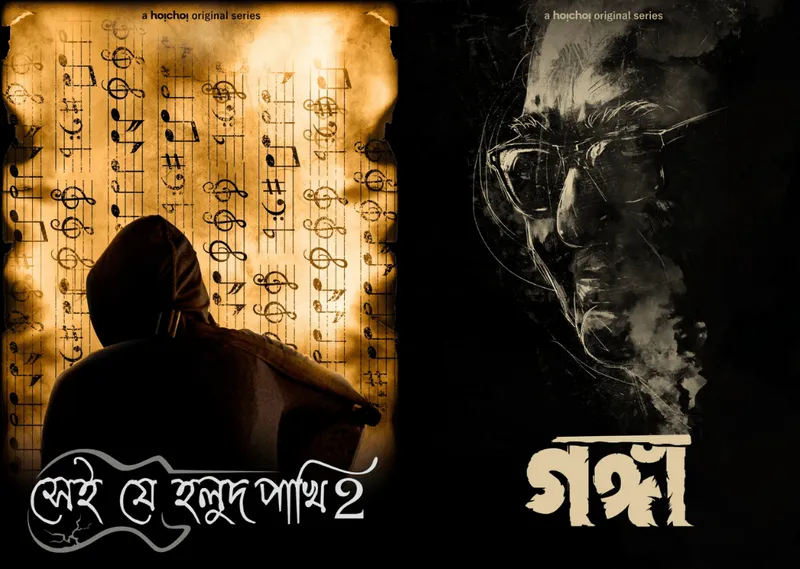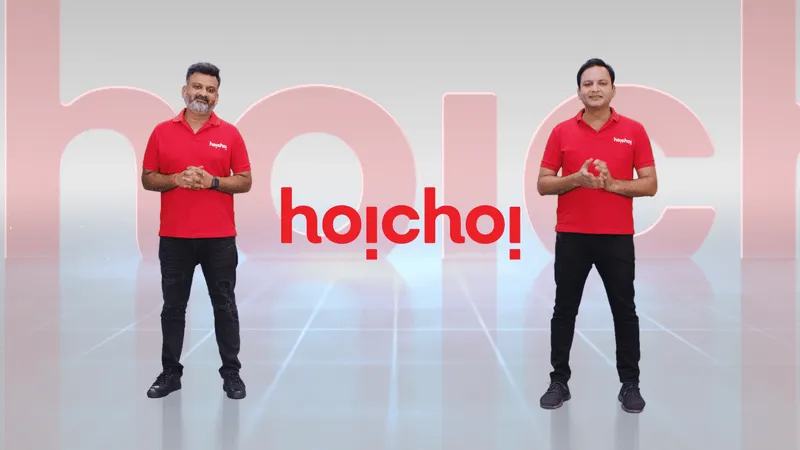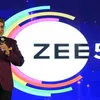Rise of vernacular OTT: How Hoichoi became the go-to video-on-demand platform for Bengali content
Vernacular OTT platform Hoichoi caters to 250 million native Bengali speakers in the world. With 600-odd titles, 3,000 hours of programming, and 13 million cumulative users, it is eyeing leadership position in the segment.
When Hoichoi launched in 2017, it envisioned itself as the one-stop entertainment destination for more than 250 million native Bengali speakers around the world.
Three years, 600-odd titles and 3,000 hours of programming later, it is the leading Bengali OTT platform not only in India, but also in Bangladesh, the UAE, and 100 other countries.
Hoichoi reaches 13 million cumulative subscribers (including via telco partners), which may be higher than most Indian OTT apps. The platform also houses 1,000 music videos and several hours of non-fiction content.
The Kolkata-headquartered OTT operator claims to be doubling its revenue every year, with 40 percent of its direct revenue coming from international customers. The platform also witnessed a 3X-4X increase in viewership since the lockdown in March.
“The lockdown has been a huge tailwind. It has accelerated digital and people’s willingness to pay for content by two years. It has also expanded the base of users who can be monetised,” Vishnu Mohta, Co-founder, Hoichoi, tells YourStory.
In September, Hoichoi unveiled its grand content slate for its fourth year. This included 25 original series, including literary adaptations, thrillers, romance, comedy, horror, ‘First Day First Show’ films, and a bunch of exclusive digital premiers.

Vishnu Mohta, Co-founder, Hoichoi TV
Besides content, the platform rests on two other pillars — distribution and tech — that are also being expanded and revamped. (more on that later)
Summarising Hoichoi's three-year journey, Vishnu says,
“In 30 years of SVF [Hoichoi's parent company], the last three have only been about Hoichoi. We were a B2B company dealing with distributors, broadcasters, multiplexes... We didn’t know B2C where you directly interact with the customer, understand their tech issues, or solve their payment problems. With Hoichoi, we have transitioned into a global company from a content reach point of view. And that is the power of the internet. Without it, we would never have been able to reach customers in Japan, Sweden, Iceland, and Argentina.”
When Hoichoi launched in 2017, after being in development for a year, it set off a string of firsts in India’s OTT industry — first vernacular video-on-demand platform; first to launch subscription top-up cards; first to enable pay-per-view (which it discarded due to piracy issues); and first to offer content dubbed in other languages.
It was also among the handful of homegrown OTT services (along with Eros Now and ALTBalaji) to be born out of a traditional film studio. Its parent company SVF Entertainment had been making Bengali films for over 30 years until then.
In an earlier conversation, Vishnu told YourStory, “With our depth of content, IP, and the experience of making so many movies and shows, it was the right time to transition into the third form of storytelling - digital. With Reliance Jio bringing a tectonic transformation in the internet speeds, people could stream an entire movie on their smartphones. 3G was a pain, but 4G fixed it. It was clear that everyone’s entertainment viewing was moving towards the internet.”

Hoichoi will be creating 25 original series in the next one year
Factors driving Hoichoi and vernacular OTT
In the last two years, OTT has been the fastest-growing segment in India’s media and entertainment (M&E) sector.
Even during the pandemic, when all other M&E segments tanked due to a slowing economy, KPMG data revealed that OTT revenues climbed 26 percent and subscriptions grew 47 percent. “Consumers are rebalancing rather than reducing expenditure away from outdoor entertainment, cinema, and concerts to OTT and gaming,” it stated.
Hoichoi, along with 40-odd other OTT platforms that operate in India today, has gained immeasurably from the pandemic-induced habit transformation in viewers. However, the winds of change had started blowing even before that.
As India’s smartphone penetration increased and 4G became widely available post-Jio, the Next Billion Users started taking to the internet, with 73 percent of them consuming online video regularly. In the last one year, smartphone OTT viewership has grown from 5 percent to 19 percent, as per KPMG.

Hoichoi reaches users in India, Bangladesh, and 100 other countries
With the Indian internet becoming more rural and vernacular, the demand for content in native languages also peaked almost organically. Google estimates that 500 million Indian language users would “need access to great content in their native tongues on their smartphones” by 2021.
Hoichoi not only fulfils this native need, but also does it at a lower price point vis-a-vis general OTT platforms like Amazon Prime Video, Netflix, Disney+ Hotstar, among others. An annual Hoichoi subscription costs Rs 499, which is 50 percent more affordable than Amazon Prime Video's annual plan.
Vishnu elaborates,
“People’s willingness to pay for content has grown exponentially. Earlier they paid for data, and had nothing left to pay for content. Now because of Jio, they don’t think that they are paying for data. So, most OTTs have been able to have a strong subscription strategy. They know that subscription is the only route to create a profitable balance sheet. Now, everyone wants to have a regional strategy because the new audience that will come out of Tier-II and III towns will be non-Hindi and non-English. And the depth of content will be a very important factor for them to subscribe.”

40% percent of Hoichoi's direct revenue comes from international users
Besides Hoichoi, a bunch of vernacular OTT services have mushroomed lately. These include Addatimes (Bengali), Simply South (Tamil, Telugu, and Malayalam), Sun NXT (four South Indian languages), Aha Video (Telugu), and Planet Marathi (Marathi).
Putting the phenomenon in perspective, Girish Menon, Partner and Head, Media and Entertainment, KPMG in India tells YourStory,
“With deepening digital infrastructure across Tier-II and III cities and beyond, and further helped by the spike in digital consumption on account of COVID-19, pureplay regional OTT platforms are seeing significant traction. These have the advantage of a single-minded focus on a particular language, and staying close to the cultural nuances of that language. They are relatively more affordable compared to multi-lingual platforms, and provide regular and culturally relevant content to their target markets.”
However, regional OTTs might face challenges in achieving scale, which international OTTs have been able to because of “higher resources” at their disposal.
Hoichoi, on the other hand, believes that its first-mover advantage in Bengali OTT content, a huge untapped market in Bangladesh, and a wide range of distribution partnerships can solve challenges of scale.

Hoichoi will roll out its revamped app interface shortly
Scaling through distribution and Bangladesh
Hoichoi has struck distribution deals with the likes of JioFiber, JioPostPaid Plus, Vodafone Play (now Vi Movies and TV), and Airtel Xtream.
Telcos bundle Hoichoi subscriptions with mobile data packs, thus reducing the cost of access for existing users and the entry barrier for new users. “Telco reach is the best way to get to a big user base quickly,” says the co-founder.
Hoichoi has also partnered with smart TV brands Xiaomi, Samsung, and LG besides being available on Android, iOS, FireTV, AndroidTV, AppleTV, and Roku. Until 2018, users could also buy Hoichoi top-up cards at kiosks and malls.
Mahendra Soni, Director & Co-founder, Hoichoi, told YourStory earlier, “Almost 40 percent of our audience comes from non-urban areas and their primary mode of transaction is cash. So, we decided to adopt the successful telecom model of top-up cards to make it convenient for them to subscribe to Hoichoi. This offline payment mechanism would help us reach the masses.”

Hoichoi Co-founders Mahendra Soni and Vishnu Mohta
Stressing on Hoichoi’s first-mover advantage, Soni says, “When satellite TV launched in the 90s, it took a decade for channels to realise that regional is a huge market too. [Today Star Jalsha is bigger than Star Plus in Bengal] The same thing is playing out in OTT. By the time these global players wake up, we’d already be market leaders in Bengali content."
In 2018, a year after launch, Hoichoi forayed into international markets through telco partnerships with Robi (in Bangladesh) and Etisalat (in the UAE).
Bangladesh has added an addressable audience of 180 million for Hoichoi, and offers large pockets where demand for Bengali content is left to be “unlocked”. Hoichoi opened an office in Dhaka, created original shows in association with Bangladeshi artistes, and has doubled its user base since launch.
Vishnu explains, “It is important to get the cultural milieu right. Even though our language may be the same, the nuances and accents are quite different there. At some point, Bangladesh will become a bigger market than India. Think of an entire country of only Bengali speakers. It is a huge space.”
However, Bangladesh poses quite a few challenges. “It doesn’t have a Jio [equivalent]. Data is expensive, bandwidths are a big problem. Bangladesh may be trailing India by three to four years in digital transition,” Vishnu says.

Hoichoi's direct-to-digital releases are branded 'First Day First Show' films
Creating a frictionless user experience
In its first two years, Hoichoi suffered small-town India’s low-RAM devices, which made streams lag and created friction in the user experience, especially on older Android devices. Content personalisation remained a challenge too.
In April 2020, it rolled out a progressive web app (PWA), and is also redesigning its Android and iOS app interfaces to create a fluid experience.
Aloke Majumder, Head of Technology, Hoichoi, tells YourStory, “Our objective is to provide optimal viewing experience to consumers without buffers. Many people do not have a quality mobile connection. With PWA, users can enjoy a native app-like experience through a standard mobile browser.”

Hoichoi's revamped app will come with a parental control feature
The redesigned app will launch in the next few weeks, and comes with features like parental control and personalised content recommendations. Hoichoi has added an annual subscription plan of Rs 699 for two simultaneous streams, and is also rolling out a carrier billing option for smartphone viewers.
Vishnu says, “Payments are a problem we want to solve by making it recurring. Carrier billing will provide an affordable way to consume Hoichoi. Users can buy subscriptions for a week or a month by paying with their mobile balance.”
The Hoichoi app has crossed a million installs on Google Play Store. “But downloads are not a metric we track. Hoichoi has always had a pull strategy and not a push strategy. We only care about those who pay,” Vishnu says.
With India’s OTT sector poised to reach Rs 338 billion, and online video subscribers likely to cross 40 million by 2022, it is ‘prime time’ for Hoichoi.
The co-founders sum up by saying, “We have created a Bengali cohort and we want to be everything to everyone there. Hoichoi should be synonymous with Bengali content in the world. That is how iconic internet brands get created.”
Edited by Saheli Sen Gupta














